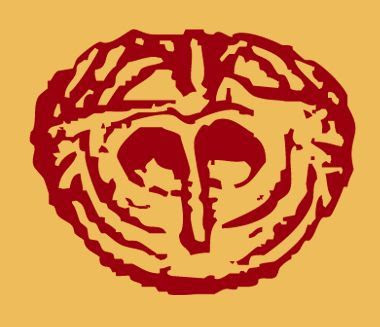(Reuters) - Spain's pre-historic burial chambers have survived invasion, war, a long dictatorship and a property bubble which paved over vast tracts of the country.
12/12/2011. Reuters.
But the economic crisis which ended the building boom that buried some of the country's greatest archaeological treasures under shopping malls and new housing may also be bad news for those hoping to provide lasting safeguards for Spain's remaining tholos dolmens or passage tombs.
The Aljarafe region outside the city of Seville in southern Spain, with a rich Arabic and Christian history, is believed to house Europe's most extensive grouping of tholos dolmens, dating back some 5,000 years.
Many of these archaeological treasures were buried under new construction during a decade-long building craze that swept across Spain and left 1.5 million vacant homes when it ended.
A debt crisis ravaging Spain's economy has saved some of the dolmens by freezing funds for construction. But the credit crunch also means scarce money to explore these little-known Copper Age settlements and turn them into tourist centers.
"It's as if we had a gold mine under our feet; all we need is the investment muscle to reap the benefit. I don't see this latent potential in any other industry or sector," Juan Manuel Vargas, a local archaeologist said.
Vargas is head archaeologist in Valencina de la Concepcion, a small town outside of Seville and home to many dolmens, two of which -- La Pastora and Matarrubilla -- are open to the public and receive about 10,000 visitors a year.
Dolmen constructions are large stones stood upright to support a large flat boulder like a roof or gigantic table. They were erected around Western Europe, from Ireland to the Baltics, starting about 7,000 years ago. Human remains have been found in or near many of them, leading to the theory that they are tombs. In the passage dolmens, the stone structure forms the entry way to a burial mound.
La Pastora dolmen in Valencina boasts the longest corridor ever discovered in a passage grave in Europe, while its sister Matarrubilla houses a stone altar inside its burial chamber offering clues into the funerary rituals of early settlers.
Driving along a dirt road to La Pastora past rolling hills dotted with olive trees under a brilliant sun it is easy to imagine the centuries of civilizations who have inhabited this mystical land. But the visitor is catapulted back into the present upon reaching the dolmen.
The chamber sits beside a giant telecommunications tower, and empty beer bottles are strewn inches from an archaeological site which provided a range of ancient artifacts before excavations were halted after the funds ran out.
"It's a problem of mentality. After seeing it every day, our residents aren't aware of what they're living next to," Vargas explained.
The youth are not the only ones who have failed to recognize the historical value of the land underneath their beer bottles.
The Montelirio dolmen, a unique two-chamber structure in neighboring Castilleja de Guzman, was nearly suffocated by plans to build a supermarket and a retirement home.
APPARENT LEADER BURIED WITH 19 WOMEN
In 2007, archaeologists discovered the remains of what they thought was a chieftain in Montelirio, and to their surprise, 19 women believed to have drunk a poison in a ritual to accompany their leader on his journey to the netherworld.
The remains of the women sit in a circle in a chamber adjacent to the bones believed to be of their chief.
"Montelirio offers important clues into these societies and their possible burial rituals," archaeologist Vicente Aycart said, adding: "Who knows? Maybe this was a matriarchal society and that one man was their favorite eunuch!"
Aside from the archaeological wealth yet to be unveiled, these little-known prehistoric sites may prove a profitable tourism mine for a country that needs fresh growth drivers to battle sky-high joblessness and the threat of another recession.
Economists agree that Spain would do well to draw on its rich history and culture to promote itself as an all-season tourism destination and fuel a sector worth about 11 percent of gross domestic product.
"Spain has enormous opportunities to further boost cultural tourism linked to music, history, architecture and archaeology," said Jose Luis Zoreda, CEO of Spanish tourist lobby Exceltur.
"But given autonomous communities' financial difficulties right now, I don't know if this kind of investment will be on the top of their list in 2012," he said.
Spain's indebted autonomous regions, which invested heavily in the construction boom, are now at the heart of financial market concerns that the country may miss its budget deficit target and need a bailout just like Greece, Ireland and Portugal.
Plans to create an archaeological park in Aljarafe with a visitors' center, museum and a route taking visitors from the dolmens to the nearby Phoenician artifacts of El Carambolo and the Roman city Italica are at a standstill.
Once money starts to flow again, archaeologists and non-profit associations warned that steps must be taken to protect this triangle of ancient history while developing controlled and sustainable tourism.
"The real gem of these places is the scientific depth that we don't even know yet. First we need to create a cultural site. The tourism will come later," said Jorge Arevalo, vice president of a dolmen protection association said.
"If we don't take care of it, future generations won't be able to enjoy it. We have a responsibility to history."
(Editing by Judy MacInnes and Paul Casciato)




No hay comentarios:
Publicar un comentario